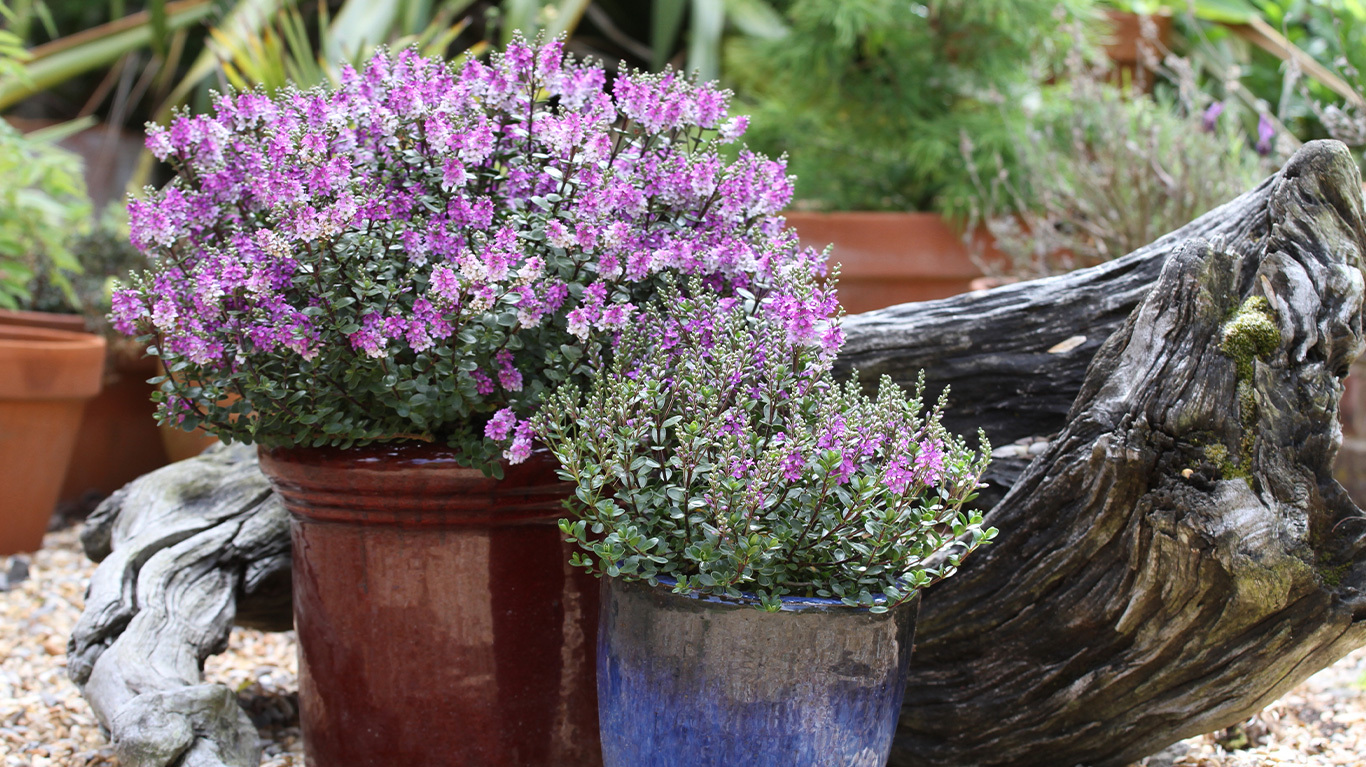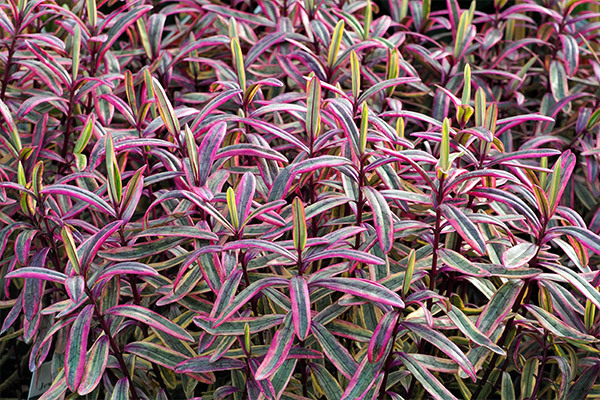How to Plant and Grow
Hebe
Hebe plants are evergreen shrubs, known for their exceptional presence in a border or container. They’re perfect as low-growing hedging and provide months of interest to your displays when in bloom.
If you’re new to growing hebes, then you’re in the right place. We hope this guide helps you learn how to grow and maintain your hebe plants like a pro.

What We've Included
When to Plant | Where to Plant | How to Plant | When to Water | Protecting Plants | Pruning | Propagating | Common Diseases & Pests | When will they flower? | Inspiration
When to Plant
Hebe shrubs are best planted in spring unless you have a container shrub, as they can be grown at any time of the year if the soil isn’t frozen or waterlogged. Container shrubs purchased in summer should be planted out as soon as possible and watered regularly to help them settle in.

Where to Plant Hebe
Plant your Hebe in full sun or partial shade, sheltered from harsh winds and frost. The size of the variety will determine where to plant them. Some varieties grow quite large and can be grown at the back of a border, and some can be medium to small sizes, which can be grown at the front of a border or in a container.
How to Plant Hebe
Planting Hebe from pots into borders
Pot-grown plants are incredibly easy to plant and grow. Whether you’re growing them directly outside into the border or into a container, our pot-grown plants are a breeze from the moment they arrive.
- Prepare the soil before planting with plenty of organic matter, like compost, before planting. This helps the soil to retain moisture, helping your Hebe thrive.
- Water the plant well before planting it in place so that the stress on the plant is minimalised.
- Dig a hole in the border that’s twice the width of the root system, and as deep as it was in its pot.
- Wedge in the plant by adding soil to the gaps in the hole, firming down the surface to ensure it’s in place. - Water in well, and you’re done!
Planting Hebe into Containers
- Choose a container that is slightly larger than the original container.
- Fill the pot with your compost of choice.
- After two or three years, the roots fill the pot, which means it’s time to repot it into a slightly larger container in spring.
When to Water Hebe
For the first few years, water Hebe shrubs in dry spells throughout spring and summer. Once they have established, they are drought tolerant and won’t need watering as often, except for particularly dry spells in summer to help produce healthy growth.

Protecting Plants in Winter
Many varieties can handle cold spells, especially in mild areas of the country. Some varieties, however, are less hardy and may need winter protection to ensure they’re not damaged by frost. Container plants can be moved into a greenhouse or conservatory. You can also place them somewhere sheltered, like next to a south-facing wall, covering it with fleece at night. Border plants can also be wrapped in fleece, especially when frost is predicted.
Pruning Hebe
Hebes naturally are nice and round, needing pruning rarely. However, if you think it needs a bit of a tidy, lightly prune the outside to reform its shape with shears. Avoid hard pruning, as they can fail to re-sprout. Deadhead spent flowers once they have withered to maintain a tidy display.

Propagating Hebe
Hebes are best propagated by taking semi-ripe cuttings. Small-leaf varieties are best propagated from semi-ripe shoots. Overwinter in a frost-free place, planting them out the following spring.
Common Diseases and Pests
Hebes can be usually pest and trouble-free. However, they can be susceptible to:
Aphids – Treatment isn’t often necessary for this though.
Winter damage – If your variety isn’t hardy, it can suffer from winter damage. Check when buying whether your hebe is hardy, and act accordingly if frost is forecast.
Downy mildew – As long as adequate ventilation is given; this shouldn’t be a problem.
Root rot – This can happen if a hebe is planted in wet or heavy soil. To avoid this, you can plant them in a container or raised bed.
When will Hebe flower?
Hebes can produce fluffy flowers from summer to mid-summer. This general timeframe may differ from plant to plant, so double-check the information given with your plant to know for sure.

Ready to Shop?
Find some inspiration for your garden
